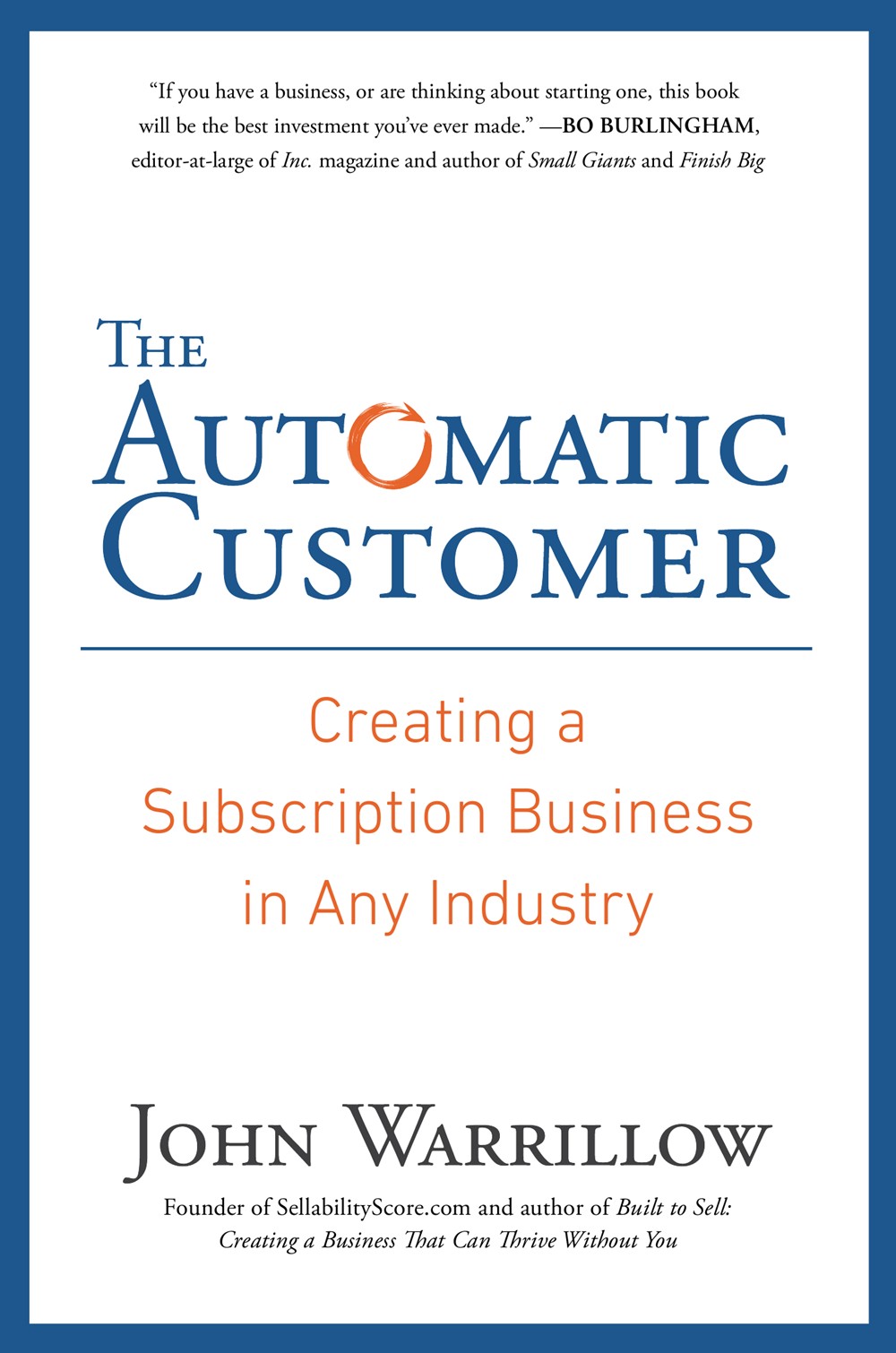The Automatic Customer by John Warrillow
May 06, 2015
A nuts-and-bolts overview of the subscription business model for those ready to put pen to paper.

It used to be that the only recurring service subscriptions folks paid for were for cable television and home phone service. Simpler times, fatter wallets. Now, our credit cards are automatically charged each month by a wide variety of companies taking care of everything from our incessant shaving and diaper needs to our obsession with environmental documentaries and makeup samples. We even pay for a subscription for free shipping. Yes, it seems we will pay for anything that will make our lives easier by making boring tasks automatic. This is great news for companies looking for a reliable revenue stream in uncertain economic times. Why push and push and push for one sale when you can get a never-ending sale? The Automatic Customer by John Warrillow can help you make the leap from a one-and-done buyer to an ongoing subscriber that brings stability to your bottom line.
Warrilow's book rose to the top of my to-be-read pile while we were pondering a return to a quarterly book box. And while many business books have loftier, more inspirational goals in mind, Warrillow's approach to the subject is squarely focused on the nuts-and-bolts, a "workbook" of sorts for those considering this popular business model. If you are ready to put pen to paper and develop a concrete plan, this is your book.
Before digging in to the various types of subscription models, Warrilow reviews the "new 500-year-old business model," which has some surprising pre-Netflix origins:
The history of the subscription business model dates back to the 1500s, when European map publishers would invite their customers to subscribe to future editions of their maps, which were evolving as new lands were discovered, conquered, and claimed. The geopolitical landscape was evolving, and map publishers would obtain commitments from members of the noble and academic classes to subscribe to future volumes of their maps, giving the publishers the capital they needed to plot the world's discoveries on paper.
Aside from newspaper, magazine, and the aforementioned telecom services, the recent success of Amazon Prime is a turning point in the history of subscriptions. While on the surface, customers are paying for free two-day shipping, what Amazon was really doing was "changing people's mentality so they wouldn't shop anywhere else." Once you have succeeded in getting a customer to sign up for a long-term purchase, their brains then tell them they want to get as much value as possible out of their purchase. Thus, Amazon Prime members buy more frequently and spend nearly three times as much on Amazon as non-Prime customers. And now that Prime includes free streaming for Amazon Instant, customers have fewer and fewer reasons to give their money to other companies.
The meat of the book is a detailed look at nine different subscription models, including Membership Website (The New York Times digital subscription), All-You-Can-Eat Library (Spotify), Surprise Box (Birch Box), and Peace-of-Mind (LoJack). For each model, Warrilow digs in to the big picture of the model, success stories, insider knowledge, and (most crucially) key qualifiers to see if the model is right for you. The author follows up this model matrix with discussion of key factors for success, including some very detailed and helpful mathematical equations for you to analyze viability, margins, and churn rate.
You might be thinking, "There's no way this relates to my company—we don't have widgets that we want to ship to customers on a regular basis." That's what Warrilow thought, too. Until he looked at the services his consulting firm provided as something that he could package and sell in chunks, instead of customizing a program for each client. Even though in the end we decided not to return to the subscription box model, this book started a shift in my thinking about marketing here at our company. I look forward to mulling over my marked-up copy of The Automatic Customer and pages of notes in the upcoming months to see where—in small and big ways—we can pull folks along for a longer ride. I will keep you posted on our new initiatives and, as always, look forward to your feedback.

